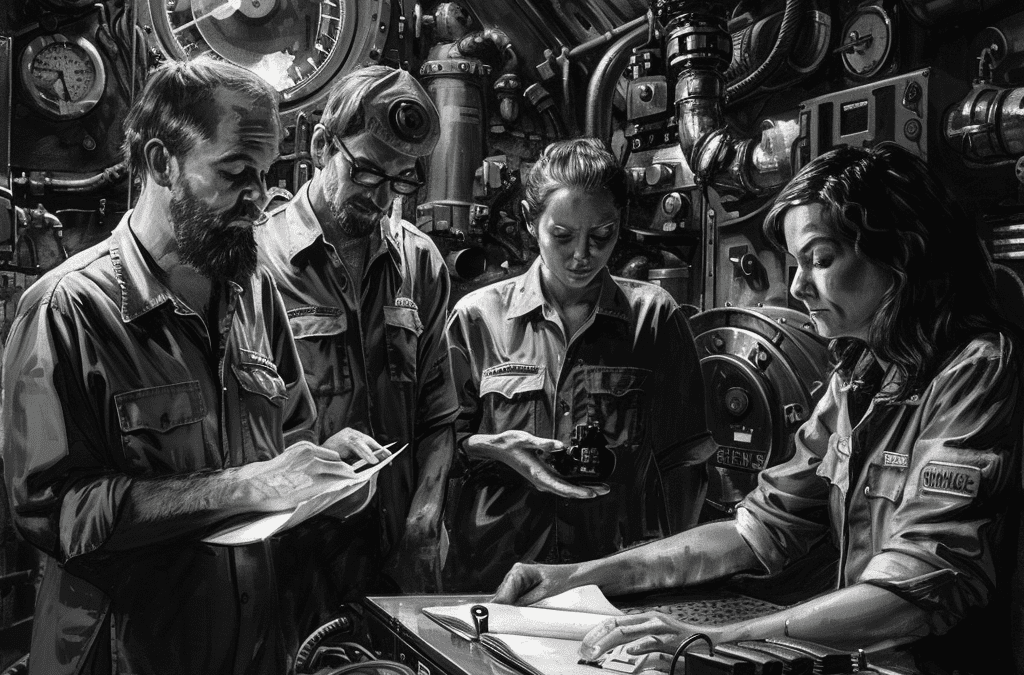Engineers are responsible for shaping the world. Engineers create everything from pollution control to low-cost building materials, as well as lifesaving medical equipment.
Unlike scientists, who deal with the world as it is, engineers envision the world as it could be. They balance exactitude and chaos to bring visions to focus. Engineering is about solving problems, so it’s important for them to have the right engineering document management strategy.
Design
The engineering design process is the series of steps that engineers take to create functional products and systems. It is an iterative process, and some parts of the cycle might need to be repeated multiple times. The steps include defining the problem, brainstorming solutions and developing prototypes. In addition, the design process includes testing and evaluating results.

Engineers are the creative thinkers who work on projects that can improve people’s lives by providing solutions to real-world problems. They use creativity and scientific principles to find innovative solutions to transform the world’s resources into useful products, buildings and services. Engineering is an art that requires a unique mix of knowledge and skills. It is a creative field that requires abstract mathematics as well as common sense.
The first step is to define the problem. The first step in the engineering design process is to define the problem. This gives engineers more clarity about the project and allows them to gain insight. This is a great way for everyone involved to have clear goals and actions. During this step, it is best to involve employees, industry experts, and experienced professionals. Brainstorming can help engineers come up with solutions that meet the needs and wants of their target audience.
Research is a step in the engineering process. You can conduct research by comparing similar designs within the same industry, or by comparing different types of products. This helps engineers determine what is needed in their design and understand the requirements for their solution. It is important to understand that certain things, such as product size and price, cannot be changed.
After research, the engineer must brainstorm ideas for the solution to the problem. This can be done either alone or in a group. It is important to evaluate all the options and weigh the pros and cons. The engineers can then decide which solution will best meet their needs.
The engineer must then create and test a working prototype. This is the most challenging part of the engineering design process. Engineers must make sure that the prototype is safe and meets all requirements. The prototype must be affordable and be able be manufactured. Once the prototype has been tested, it can then be used for real-world applications.
Analysis
The analysis phase is a crucial part of engineering. It requires breaking a problem down into smaller parts and examining how each part might be solved. This is important for assessing risks in an engineering undertaking. This step is important in the engineering process because it helps ensure that a product or structure will be cost-effective and reliable.
Computer simulations are a major part of engineering analysis. They test the viability and feasibility of a design. These programs can be used to identify potential problems, and make necessary adjustments before construction begins. This reduces the risk of failure and saves money, time, and resources.
The impact of engineering on the environment is also an important part of the analysis process. This is usually done by environmental engineers. Environmental engineers, for instance, may use data analyses to evaluate pollution control strategies and measure efficiency. They can use the data for predicting environmental impacts and creating solutions to minimise negative consequences.
Implementation
Implementation in engineering involves converting the design of a system into a functional software application or hardware product. Testing and deployment are possible steps in the process. During the implementation stage, engineers can also perform integration, analyses and documentation. They must also ensure the project meets all required requirements and is compatible to existing systems. The implementation process is a critical step in the development of any new product or service.
Engineers must have a clear understanding of the goals and objectives of the project. This is achieved by creating an implementation plan. The plan is a road map that helps the team to execute the project and achieve the desired results. It includes key elements such as project management, communication strategies and training requirements. It also identifies the roles and responsibilities of team members and establishes a timeline for completion.
The implementation process can be difficult, especially when changing existing processes. The implementation of a new procedure requires the cooperation of everyone involved. The new process also needs to be adapted so that it fits into the culture of the business.
To encourage employee buy-in, businesses should implement new processes slowly. A staged approach can be used to achieve this. It breaks the project down into smaller components and implements them one at atime. The staged approach helps to control costs and prevent delays.
Another way to promote employee buy-in is by providing incentives for embracing the new process. These can be in the form of bonuses or other rewards. But it is important that you remember that the best incentives are those which are based upon employee behavior.
When implementing a new process, companies should monitor and evaluate its effectiveness. This allows them make data-driven changes and identify areas of improvement. Regular evaluations are necessary to ensure that processes are being implemented efficiently and correctly.
The implementation process is critical to the success of a business. The goal is to create an implementation process that meets your specific needs, while still being flexible enough to be able to adapt to future changes to technology and business operations. To accomplish this, you need to develop an implementation plan and set clear goals for your team.
Management
Engineers are often strong at solving technical problems, but they are not always well-versed in the business management techniques that can help them to make balanced decisions and avoid risky project pitfalls. Engineering managers fill this gap by combining technical engineering concepts with business management skills to create projects that meet project goals, budgets and schedules. Engineering managers also help to keep engineering teams motivated and focused on achieving their engineering objectives.
The responsibilities an engineering manager have are complex and varied. They are responsible for implementing the vision set forth by the company’s leaders, fostering employee motivation, shaping engineering policies, and facilitating successful completion of large engineering initiatives. They must also resolve day-to-day engineering issues and team conflicts and ensure that projects progress according to a timeline. Engineering managers oversee the research, development and proposal of new designs and products. This requires a thorough knowledge of an organization’s finances and supply chain.
While the job of an engineering manager involves a great deal of special knowledge, it also demands a strong sense of professionalism and ethics. The engineering profession has a direct impact on the wellbeing of mankind, so it is important to have a strong ethical base and a sense of responsibility.
Engineering is an exciting career with many opportunities for advancement. Engineering managers have a unique set of skills that can make them valuable assets in both the public and private sector, including problem solving, team building, strategic thinking and planning, and the ability to translate business needs into an engineering strategy.

